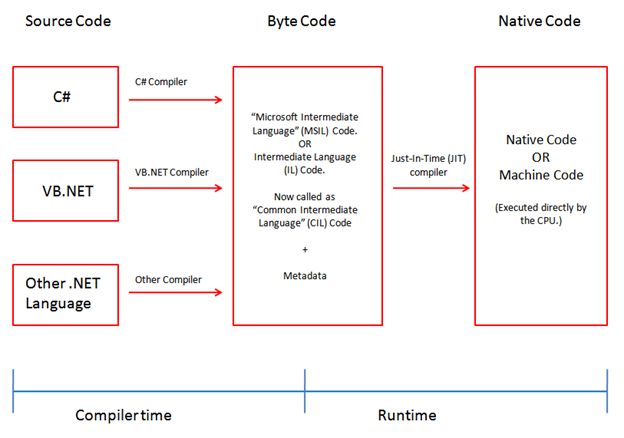Explain the process of compiling and executing .NET application.
The process of compiling and executing the .NET application are:-
C# programs run on the .NET Framework, which includes the common language runtime (CLR) and a unified set of class libraries. The CLR is the commercial implementation by Microsoft of the common language infrastructure (CLI), an international standard that is the basis for creating execution and development environments in which languages and libraries work together seamlessly.
Source code written in any .NET languages (C#, VB.Net, etc.) is compiled into a Microsoft Intermediate Language (MSIL) or simply(IS) that conforms to the CLI specification. The IL code is stored on disk in an executable file called an assembly, typically with an extension of .exe or .dll. CLR performs just in time (JIT) compilation to convert the IL code to native machine instructions. The CLR also provides other services related to automatic garbage collection, exception handling, and resource management.
Code that is executed by the CLR is sometimes referred to as "managed code," in contrast to "unmanaged code" which is compiled into native machine language that targets a specific system.




Comments
Post a Comment